Honor award
Co-Modification
Joseph Kubik, Student ASLA, Graduate, University of Pennsylvania
Faculty Advisor: Mark Thomann
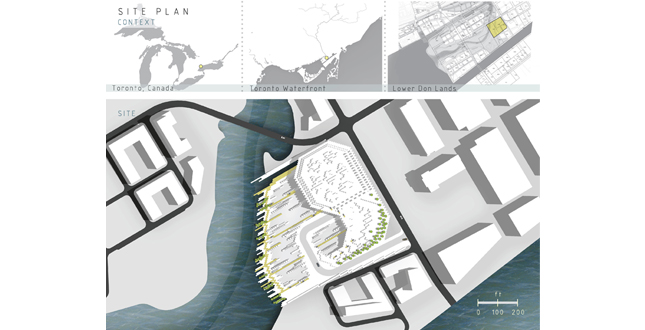
 Close Me!
Close Me!Soil Sustainability — Co-Modification: the pervasive societal view of arable soils is that of an unlimited resource. Our construction practices not only destroy them, but rely on imported soils in order to function. As cities continue to sprawl they deplete a key asset necessary to both the stability and health of any growing population. CO-MODIFICATION address soil sustainability by posing a new landscape paradigm in which the remediation of healthy soils becomes a by-product of urban living.
Download Hi-Res ImageImage: Joseph Kubik
Image 2 of 16
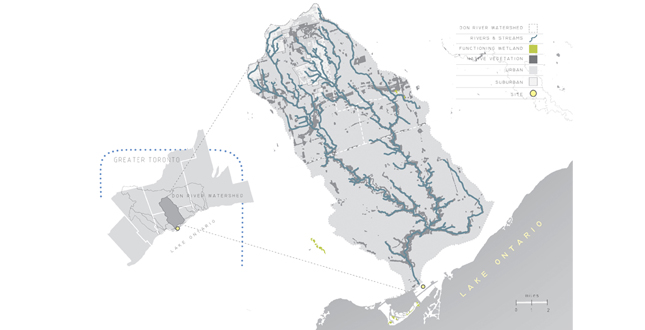
 Close Me!
Close Me!Toronto Waterfront — Progression: Three major influences play a role in the narrative of the Lower Don Lands: The BARRIER SYSTEM at the mouth of the Don River (past), INDUSTRY (present), and RECREATION (future).
Download Hi-Res ImageImage: Joseph Kubik
Image 4 of 16
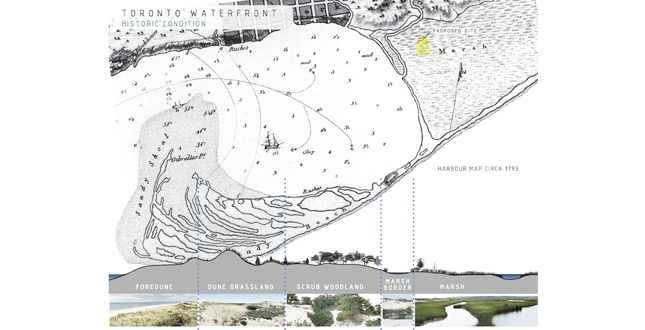 Close Me!
Close Me!Toronto Waterfront — Historic Condition: While the remnants of Toronto's once near prototypical barrier system still remain, they are now disparate elements, no longer part of a functioning whole.
Download Hi-Res ImageImage: Joseph Kubik
Image 5 of 16
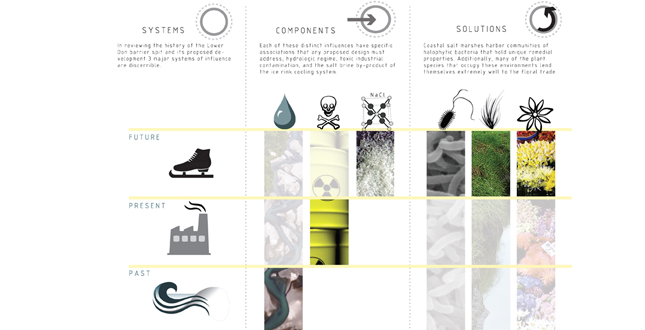 Close Me!
Close Me!System and Solutions — Finding Common Group: In creating a dynamic system that is to function in the future, the design recognized and responded to the continued impact of the previous a current systems that have dominated the Lower don Lands.
Download Hi-Res ImageImage: Joseph Kubik
Image 6 of 16
 Close Me!
Close Me!Remediation Through Modulation — Design by Volume: In order to potentially remediate soils for the entire Lower Don Lands development area, the site must be able to accommodate soils from the largest planned lot, assuming a lot-by-lot development strategy.
Download Hi-Res ImageImage: Joseph Kubik
Image 7 of 16
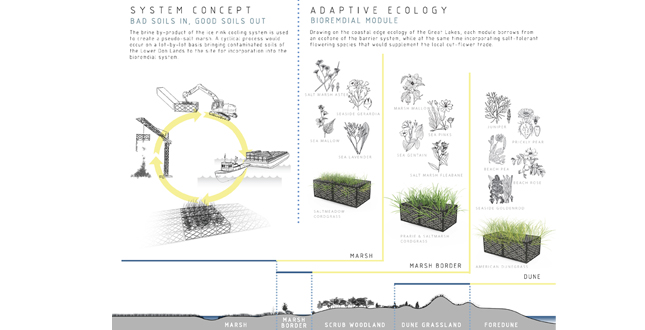 Close Me!
Close Me!Left: System concept — Bad Soils In, Good Soils Out. The brine by-product of the ice rink cooling system is used to create a pseudo-salt marsh. A cyclical process would occur on a lot-by-lot basis bringing contaminated soils of the Lower Don Lands to the site for incorporation into the bioremedial system. Right: Adaptive Ecology — Bioremedial Module. Drawing on the coastal edge ecology of the Great Lakes, each module borrows from an ecotone of the barrier systems, while at the same time incorporating salt-tolerant flowering species that would supplement the local cut-flower trade.
Download Hi-Res ImageImage: Joseph Kubik
Image 8 of 16
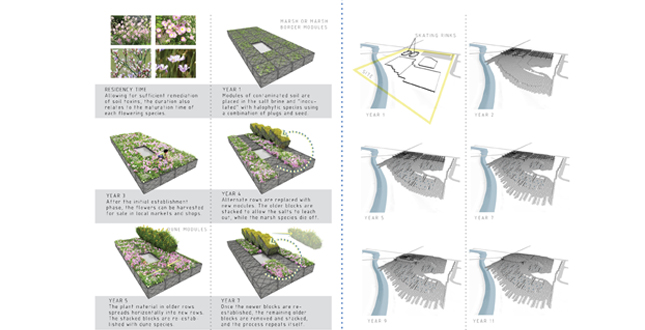 Close Me!
Close Me!System Operations and Module Accumulation — Remedial Cycle.
Download Hi-Res ImageImage: Joseph Kubik
Image 9 of 16
 Close Me!
Close Me!Site Overview — Many of the flowering species utilized in planting the modules lend themselves extremely well to the cut-flower trade and would be able to provide a small boost to local commerce.
Download Hi-Res ImageImage: Joseph Kubik
Image 10 of 16
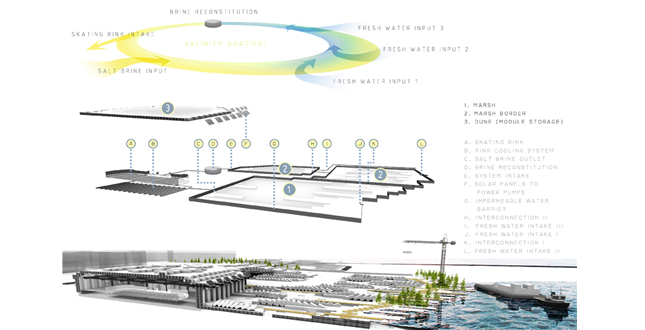 Close Me!
Close Me!Industrial Ecology — System Function and Integration.
Download Hi-Res ImageImage: Joseph Kubik
Image 11 of 16
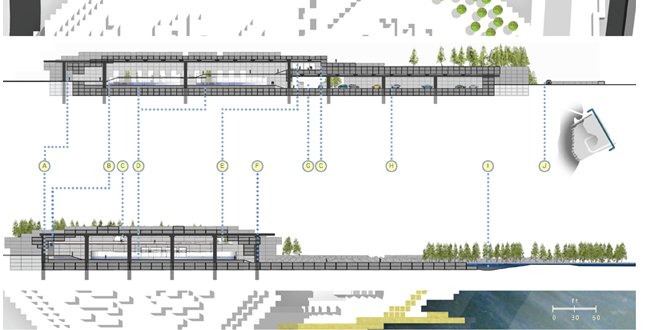
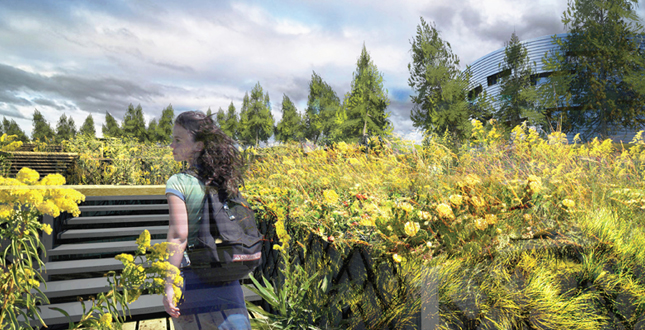 Close Me!
Close Me!Dune Adaptation — Many of the proposed designs for the Lower Don Lands and surrounding areas employ images of dunes and other habitats from within coastal barrier systems without providing a process for producing them. CO-MODIFICATION adapts these processes in the context of an urban setting.
Download Hi-Res ImageImage: Joseph Kubik
Image 13 of 16
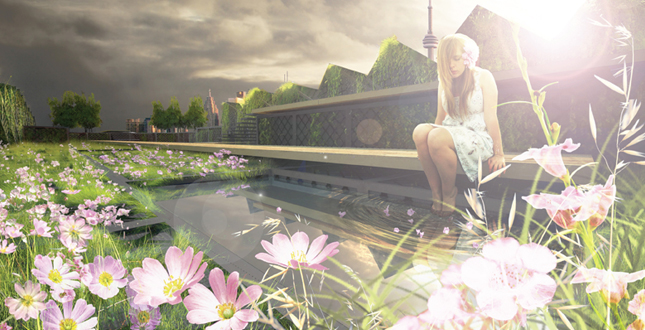 Close Me!
Close Me!Module Matrix — Fluctuating module depth, high water table, and intermittent pools create both reducing and oxidative environments, ensuring a diversity of bacterial species and a greater likelihood that the systems will be able to handle a multitude of contaminants.
Download Hi-Res ImageImage: Joseph Kubik
Image 14 of 16
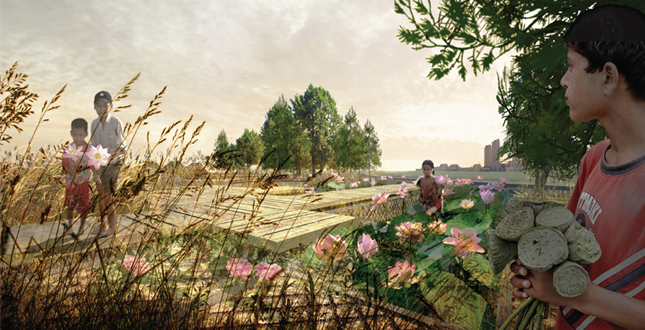 Close Me!
Close Me!Water's Edge — In addition to the halophytic modules, the site’s fresh water boundary with the river would also be planted with species that could be utilized in the florist’s trade, such as lotus and red twig dogwood.
Download Hi-Res ImageImage: Joseph Kubik
Image 15 of 16
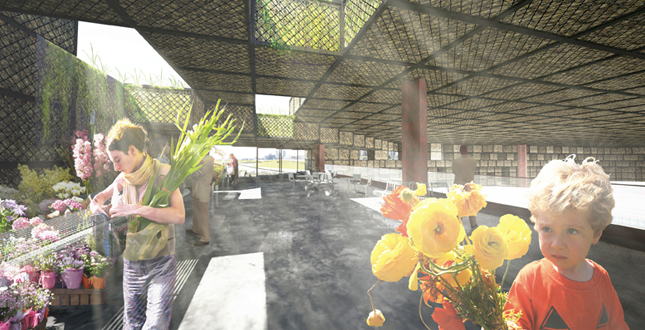 Close Me!
Close Me!Tangible Products — The climate-controlled interior of the indoor skating rink provides a perfect venue for an indoor market where flowers grown and harvested on site can also be sold alongside cut flowers from local growers. Modules of remediated soil would be stored a top the rinks awaiting reintroduction to lots of the Lower Don.
Download Hi-Res ImageImage: Joseph Kubik
Image 16 of 16
Project Statement
The pervasive societal view of arable soils is that of an unlimited resource. Our construction practices not only destroy them, but rely on imported soils in order to function. As cities continue to sprawl they deplete a key asset necessary to both the stability and health of any growing population. CO-MODIFICATION addresses soil sustainability by posing a new landscape paradigm in which the remediation of healthy soils becomes a by-product of urban living.
Project Narrative
—2011 Student Awards Jury
Context
As with almost any major waterside city across North America, Toronto's waterfront has a history dominated by industrial production, leaving with it a legacy of contamination that lingers to this day. The city, like countless others, followed the typical track of industrialization and erased the rich ecology at its water's edge in the name of commerce and growth. Recently the city held an international design competition at the mouth of the Don River, in an area known as the Lower Don Lands, to begin to reverse century long patterns of degradation. While Michael Van Valkenburghs Associates' winning design strategy proposed multiple measures to revitalize the mouth of the Don and allow the river to reclaim areas that once served valuable ecological functions, it did little to address the underlying issue of contamination or the processes necessary to achieve the bucolic images they used to market their ideas.
This project rectifies this disconnect by adapting a skating rink (one of the proposed recreational programs of the new Lower Don Lands) to begin to work with, rather than against, one of the largest fresh water systems in the world.
Industrial Ecology: Weaving Past, Present and Future
The Lower Don Lands were once part of a larger barrier system typical of large bodies of water. These systems are highly dynamic and rely on varied disturbance regimes resulting in some of the richest habitats in the world. In order to integrate this larger natural system with a proposed skating rink, the processes associated with each were co-modified in conjunction with one another in order to produce a resilient hybrid system that functions at multiple levels. The key to the success of this union relied on the fact that 1) nearly all cooling systems utilize various salt brines in order to operate, and 2) halophytic (salt-loving) bacteria that inhabit coastal marshes possess unique adaptive metabolic pathways that enable them to metabolize various toxins including those typical of industrial contamination (organochlorides, hydrocarbons, ketones, and heavy metals). This commonality made it possible to utilize an otherwise useless waste by-product in the creation of a pseudo-salt marsh that not only respects the historic ecology of the Lower Don Lands, but possesses the ability to rehabilitate it. In order to jump-start microbial activity the created pseudo-salt marsh would be inoculated with soil from naturally occurring salt marshes along the Atlantic Coast. Once established with halophytic bacterial species this closed system would have the ability to continually remediate contaminated soils from the Lower Don and surrounding areas.
The system operates by means of four main components: the skating rink, the bioremedial salt marsh, the salt brine circulating between the two, and a "dune" holding area where modules that have completed the remedial process await repatriation. In addition to pure logistics, these components respect the barrier system ecology by not only incorporating species found in these coastal habitats, but also by maintaining a physical level of disturbance necessary in order for these plant species to thrive. Each soil module is assigned an "ecotone grouping" of species (marsh, marsh border, and dune) depending on what stage and location the module has reached within the remedial system. In order to ensure a self sustaining cycle, alternating rows of modules would move through the system to allow established plant species to colonize new modules as they are introduced.
Logistics and Operation
The system is modular in order to feasibly remediate soils for the entire Lower Don Lands development area, allowing for easy movement within the system as new modules come in and old ones must be removed. Assuming a lot-by-lot development strategy, the site was designed to hold enough modules at full capacity to accommodate the same volume of soil as contained in the largest lot of the MVVA master plan. This is to ensure that all soils within the Lower Don Lands, are treated, utilized, and remain in the area as the master plan is realized.
The proposed mouth of the Don River, adjacent to the site would be used as a staging area to transport the modules. Given the approximate size of the modules (8 ft x 15 ft x 5 ft) they would be lifted by crane and transported by barge. The marsh would be built to accommodate this 5 foot depth as the contaminated soils must be fully immersed in the salt brine in order for the bioremedial process to achieve its full potential. While the 5 foot depth of the module may seem excessive, it is necessary to ensure that both aerobic and anaerobic bacterial activity occur, so as to force the bacteria to use a variety of metabolic pathways which increase the likely hood that the process will fully breakdown a variety of soil contaminants. Given the level of construction that is necessary in order to realize the MVVA master plan this could easy be integrated in to the larger development plan, and given the financial realities of dealing with contamination and importing tons upon tons of clean soils this could easily be a financially competitive option. The modules themselves would posses additional framing to provide dual use as structure, making them safely stackable without fear of collapse.
Cut Flower Market
In the past, commerce and ecology existed in mutual exclusion. CO-MODIFICATION breaks with this unsustainable model. Many of the flowering species that occupy the habitats within the barrier system and those utilized in planting the modules lend themselves extremely well to the cut- flower trade (golden rod, sea pinks, sea lavender, etc). Given the continual regeneration of the plant material as the modules move through the system, there would be a continuous supply of new flowering material during the growing season. With its climate-controlled interior to its constant supply of patrons, the skating rink complex provides a perfect venue for a cut-flower market. To ensure the market would remain viable, local growers would sell their own material alongside flowers grown on site.
Additional Project Credits






